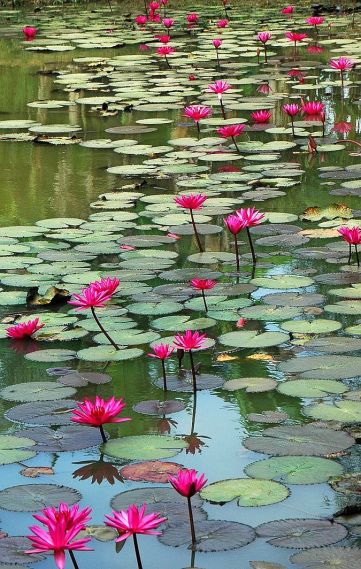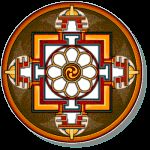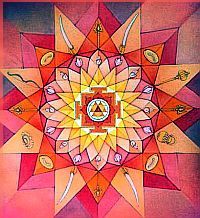Lakshana Granthas – continued
8. Srngaraprakasa of Raja Bhoja

The Srngaraprakasa of Raja Bhoja (10-11th century) is a work; spread over thirty-six chapters, which deals, principally, with poetics (Alamkara shastra) and dramaturgy. Insofar as Dance is concerned, it is relevant for the discussions carried out in its Eleventh Chapter, dealing with various types of minor plays (Uparupakas) or musical Dance-dramas.
Raja Bhoja or Raja Bhoja-deva Paramara was a king from the Paramara dynasty, who ruled between 1010–1055 CE. His kingdom comprised the Malwa region in Central India and parts of Gujarat. His capital was located at Dhara-nagara (modern Dhar, in the Malwa region of western Madhya Pradesh). It is said; the city of Bhopal is named after Raja Bhoja.
Bhoja was a warrior, a capable military commander; and, was also politically very active. He had a vast kingdom in the Central/ Western India. He had a strong alliance with the powerful King of South – Rajendra Chola; and, had even helped the Shahi Kings to resist the attacks of Mohammad of Ghazni. Bhoja fought many battles, with varying degrees of success.
Though Raja Bhoja reigned gloriously for more than forty years; the battles he fought are mostly forgotten. But, his fame as the greatest scholar-king of medieval India; an enlightened patron of learning; and, an accomplished erudite author remains undimmed.
As a ruler, he is said to have emphasised the importance of education in ones’ life; and, in his capital city Dhara-nagari, he set up a center for learning Sanskrit at Sarasvatisadana or Bhartibhavana, over which he presided.
Raja Bhoja is credited with the authorship of numerous books, covering an enormous range of topics. But, literary criticism, poetics, aesthetics; and particularly the Rasa doctrine in its various forms seemed to be his favourite subjects. And his fame as an author with refined tastes rests mainly on his two major works: Sriranga-prakasa and Sarasvathi-kanta-abharana.
The Sarasvathi-kanta-abharana (ornament in the neck of goddess Sarasvathi), is a treatise on Sanskrit grammar and Alankara-shastra (Poetics); an elaborate text of 643 verses, enriched by as many as 1,563 examples (or illustrations), spread over five chapters.
[The Sarasvathi-kanta-abharana edited by KN Sharma and VL Pansikar (1934); and Sarasvatikanthabharana of Bhojadeva: With the commentary Hrdayaharini of Narayana Dandanatha; edited by V.A. Ramaswami Śastri; Trivandrum Government Press 1948.]

Sarasvathi-6th century-Museum of Fine Arts, Houston
And, Raja Bhoja’s other work Sriranga-prakasa, a treatise in 36 chapters dealing with both poetics and dramaturgy, is more widely known. The noted scholar Dr. V. Raghavan, who edited Raja Bhoja’s monumental work ‘ भोज गश्रांगार प्रकाश (1962)’, described it as the largest known work in the field of literary criticism and aesthetics in the whole range of classical Sanskrit literature. While illustrating the encyclopedic nature of the text, Dr. Raghavan called it as the richest Indian text in Sanskrit poetics; and remarked; ‘Whatever is found in Srngara Prakasa is found elsewhere; and, that which is not found in this work cannot be found elsewhere.’
Dr. Raghavan points out, “Bhoja seems to be the first writer, whose work is available to us now, who embraced both branches (poetics and dramaturgy); and , wrote in the same work on both. .. It seems from the treatment of the subject that Bhoja wanted to write a work similar to the Natyasastra. Like Bharata, Bhoja discusses the characteristics of the Sanskrit language; but, does so even more elaborately than Bharata, although-surprisingly-Bhoja omits prosody, which is closely related to poetics. However, he discusses dramaturgy in detail and his analysis of Srngara is unique, covering as it does the types of Srngara and its expression in dramatic presentation. The range and depth of the work is quite appreciable.
[Despite all its stated virtues, Bhoja’s Srngara Prakasa did not , for a long-time, receive the attention it deserved ; mainly because of its inordinate length (more than twice that of Bharata’s Natyashastra); and, its manuscript was recovered late and published only in 1955 by Sri C. R. Josyer of Mysore. It was brought to the attention of the scholars worldwide in 1963 , by Dr. V. Raghavan; and, later published by Harvard University, under its Oriental Series.
The renowned scholar Sheldon Pollock observes:
History has been unfair to Srngara Prakasa.. Despite the fact that it is the most comprehensive and sustained body of literary analysis in pre-modern India, in some ways the most germane – in view of the range of issues treated that are pertinent to reading actually existing Sanskrit literature – and, in its organization, style and plethora of citations and analysis perhaps the most fascinating.
Bhoja’s discourse on Rasa is the most detailed and provocative we have; and the most unusual, often differing from Bharata and those who follow him]


The main topic of the Srngara Prakasa is Rasa, the aesthetic delight, a pleasurable sensation; and, its manifestation (Rasanispatti) in varied forms. And, the text is, therefore, regarded as an important watershed in the evolution of Rasa-theory (Rasa-siddantha). Bhoja Deva’s work is particularly focused on Srngara-rasa. He accorded a very elaborate and exhaustive treatment to the subject of Srngara-rasa; devoting as many as twenty-two Chapters, discussing sixty-four stages of Srngara, each divided into eight categories; and, each of that again subdivided into eight types. He also quoted hundreds of verses and passages from literary works in Sanskrit as also in Prakrit languages.
The Srngara, one of the eight Rasas categorized by Bharata, is ordinarily taken to mean a state of erotic or love. But, Raja Bhoja elevated Srngara to a sublime level, as the King of all Rasas (Rasa-raja); the Rasa of all Rasas; the Rasa in which myriads of other Rasas reside ;and the mother of all Rasas , giving scope for a countless other emotions including jealousy, fear, anger, compassion, and of course for the expression of physical intimacy.

No other Rasa has such a vast scope; and, Srngara, he said, towers over all the other feelings and sensations, as it is the most important emotion in human beings. It is very endearing; and, it appeals to human mind; present in every segment of life, since life is a never ending quest for love and affection. It is the sweetest of all (Madhu-rati madhura). The enchanting Srngara is portrayed through rich imagery and there are different aspects (Bhavas) of Srngara e.g. love between a mother and a child; love between siblings; love between friends; love between a man and a woman; love between the Almighty and devotee; and, so on.
In regards to Poetics (Alankara Shastra), Raja Bhoja assigned highest importance to Srngara-rasa, placing it on the throne as the king of Rasas. Srngara, according to him, denotes the supreme phase of bliss; and, it is the highest aesthetic principle. He said, the Srngara assumes the form of Rasa when it is enjoyed by the Sahrudaya the cultured, well-informed spectator/ reader, gifted with empathy. Such a Sahrudaya, who is blessed with a refined sense of Srngara, is indeed the Rasika (the connoisseur); and, one lacking that virtue is Nirasa. According to Bhoja, the Kavya-rasa is universal, enjoyed by all in the world; and, it makes is no sense in calling at Alaukika (otherworldly).

Srngara Prakasa and Dance
The Srngara Prakasa is of relevance to Dance, because of the discussions it carries out regarding the minor types of plays, the Upa-rupakas.
The types of Uparupakas that Raja Bhoja was particularly interested were the Dance-dramas, which are adorned with rich music, melodious songs, as also with graceful and delicate dance movements. These, technically, could be called Nrtya-bhedas, the minor dramatic presentations. But, such musical plays were fondly addressed by varieties of names.
Abhinavagupta, in his commentary, had called such Uparupakas as Nrtta-kavya (dance-drama); Raga-kavya (musical-play); Raga-darshaniya (musical presentation to be viewed with delight); Geyam-anurupakam (a sort of play that is sung); and; Nrtta-prabandha-raga-kavya (musical play presented mainly through dance). And, Raja Bhoja gave these musical plays a rather grandiose name: Pada-artha-abhinaya-atmaka preksya-prabandhas (the visual presentation of literary works, where the meanings of the words are illustrated with expressive gestures).
In short; such type of Uparupakas could be said to be minor dramatic works that were of the nature of Dance-drama, which are rendered through song, dance; and, interpreted through Abhinaya. And, in such presentations, the elements of song, music and dance (Gita-Geya-Nrtya) are dominant.
[Dr .Bose relates Bhoja’s discussion on Padarta-abhinaya to Nrtya ( pure Dance) and to the minor types of plays (Uparupakas); and, says : If we equate Padartha-abhinaya with Nrtya, which seems plausible, then we can say that Bhoja viewed it as varieties of Nrtya , the dramatic types that require Padartha-abhinaya. Dhanika in his Avaloka on the Dasarupaka and Saradatanaya in his Bhavaprakasana view these minor dramas as Nrtyabhedas, that is, as various types of Nrtya. Later, Subhankara refers to these varieties as “nrtye ratna-naksatra-maala.” All these references show, these minor dramatic types were known under many names. Later, however, they were categorized as Uparupakas by Visvanatha in the Sahityadarpana (fourteenth century A.D.)]
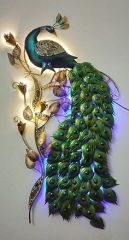

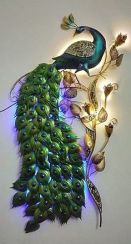
It may be mentioned here; Bharata, in his Natyashastra, had discussed, in main, the Rupakas, the major forms of the Drama. His concern seemed to be, primarily, with those types of plays that had the potential to display various modes of representations; and, to evoke verity of Rasas. For him, the aspect of Rasa was central to the Drama. He had remarked: no sense proceeds without Rasa – Na hi rasadrte kascid-arthah pravartate.
In the process, Bharata had not discussed the minor forms of the drama, the Uparupakas or Natyabhedas, a minor class of dramatic works, distinct from the major works; and, which did not satisfy all the classic, dramatic requirements prescribed for a Rupaka or Nataka proper. Such minor class of plays (Uparupakas) handled only a segment of a theme or an event in a story (Vastu); and, not its full extent. It did not also, perhaps, employ all the eight Rasas and all the four Abhinayas, in their entirety.
By the time of Abhinavagupta (Ca.11th century), the Dance had diversified into many more forms than were known during the time of Bharata. Commencing with the 11th -12th century, the minor or one-act plays, Uparupakas, the forms of dance-dramas, with a major input of dance and songs; but, with just an adequate stress on Abhinaya (acting) and Sahitya (script) became increasingly popular. During the time of Abhinavagupta, those minor classes of plays – Uparupakas, par excellence, had grown into becoming the main stay of the contemporary dance- scene.

Raja Bhoja in the Eleventh Chapter of his Srngara Prakasa discusses twenty-four types of drama and their structure. He terms these as Preksya-prabandhas, visual or the poetic compositions to be seen; and, divides them into two categories: one, requiring Vakya-artha-abhinaya and the other Pada-artha-abhinaya.
These terms relate to the acting techniques employed by the performer in a play or in a dance, for portraying various states of emotion (Bhavas) with the help of speech (Vachika); gestures (Hastha-abhinaya) and actions (Angika), and costumes (Aharya) etc.
The Āngika-abhinaya (facial expressions, gestures / movement of the limbs) is of great importance, particularly in the dance and drama. There are two types of basic Abhinayas: Padārtha-abhinaya (when the artist delineates each word of the lyrics with gestures and expressions); and, the Vākyārtha-abhinaya (where the dancer acts out an entire stanza or sentence). Bhoja does not name the class of drama that requires Padartha-abhinaya; however, he names and describes the twelve varieties within that class. These descriptions show that these varieties are full of delicate and expressive movements .
In either case, though the hands (hastha) play an important part, the Āngika-abhinaya involves other body-parts, as well, to express meaning of the lyrics, in full.
Dhananjaya in his Dasarupa had earlier mentioned two broad categories of Dance-forms as: the Marga (the pure or pristine); and, the Desi (the regional or improvised) – ādyaṃ padārthā-abhinayo Margo Deśo tathā param // DhDaś_1.9 //
According to Dhananjaya, the Nrtya, which principally, is the display of various emotional states (bhava-asrayam Nrtyam), is a representation of the traditional Marga class. While, the Nrtta, with emphasis on limb-movements, in tune with rhythm and timing (nrttam tala-laya-asrayam), belongs to the popular Desi style (Desi-nrtta).
According to Abhinavagupta, the depiction of Srngara essentially requires Nrtta; as it provides Valana, Vartana and other movements or stances.
Raja Bhoja does not name the class of drama that requires Padartha-abhinaya; however, he lists and describes the twelve varieties within that class. These, it is said, belong to the Nrtya class which require delicate and meaningful expressions, along with limb movements. Bhoja called them Padartha-abhinayatmaka Preksya-prabandhas.

As mentioned earlier; the types of such minor dramas, Nrtya-bhedas which provide visual delight (Preksya-prabandhas) with the use of Padartha-abhinaya were categorized as Uparupakas.
Such a Uparupaka is more concerned with Angika Abhinaya, with larger elements of dance, song and music; and, is more connected with the performing and stage arts; whereas the Rupaka makes use of all four kinds of Abhinaya, with a greater emphasis on dialogues.
And between Nrtta, Nrtya and Uparupaka: the Nrtta is abstract, beautiful and attractive body movements; the Nrtya, in addition to that, has elements of Abhinaya, but no speech. And the Uparupaka (also named as Nrtya-bheda) uses the body movements of Nrtta, the Abhinaya of the Nrtya; and, speech as in drama proper (Natya), but to a limited extent.
An Uparupaka, thus, was a happy invention, structured as a narrative dance-drama, depicting a theme or a segment of a theme, with abundant use of music, songs and dance (Nrtta and Nrtya); but, with just the required quantity of speech.
*
Many scholars have written in detail about the Uparupakas. The more prominent ones among these are : Abhinavagupta (Abhinavabharati); Dhananjaya (Dasrupaka); Saradatanaya (Bhavaprakasana); Raja Bhoja (Srngara Prakasa); Hemachandra (Kavyanusasana); Sagaranandin (Nataka-laksana-ratna-kosa); Bhavamisra (Bhavaprakasa); and Vishwanatha (Sahitya Darpana). Here, in this post, for a limited purpose, we shall discuss mainly about Raja Bhoja’s treatment of the Uparupakas.
Among the authors who succeeded Abhinavagupta, Raja Bhoja in his Srngara Prakasa was one of the few who dealt with the subject of Uparupakas, at length. Bhoja was also the first to include and describe twelve varieties of such Uparupaka, the minor dramas, giving details; and, later he was followed by Ramacandra and Gunacandra in their Natyadarpana.

Since these types of Uparupakas predominantly portray various phases of Srngara Rasa, the Kaisiki Vrtti, which is the graceful style of depiction, is considered most appropriate for the enactment of such Uparupakas. The Kaisiki-Vrtti, the gentle, graceful style, which characterizes the tender Lasyanga associated with expressions of love, dance, and song as also with charming costumes and delicate actions portrayed with care, mostly by women, is most suited to Srngara-rasa (tatra kaisiki gita-nrtya-vilasadyair mrduh srngara- cestitaih). And, as said, the Srngara Rasa permeates the theme of the Uparupakas, Dance-dramas, which are largely composed of dance (Nrtta and the Nrtya) and songs. It increasingly resorts to the stylized Natyadharmi mode of presentation.
Kaisiki has four varieties (Bhedas): Narma (good-natured-small-talk); Narma-spinja (the pleasure blooms at the first meeting of lovers); Narma-sphota (the lovers delighting in each other company); and, Narma-garbha (covert pleasure; incognito). The prefix Narma indicates cheer or laughter. Kaisiki is the most charming and delightful combination of Srngara and Hasya, playful expressions, one’s affection or longing for union with the lover.

The twelve varieties of Uparupakas that Raja Bhoja discussed in his Srngara Prakasa were:
-
- Srigadita;
- Durmalika (or Burmilita);
- Prasthana;
- Kavya (Chitrakavya),
- Bhana (Suddha, Citra and Samkirna);
- Bhanika;
- Gosthi;
- Hallisaka;
- Martanaka;
- Preksanaka;
- Rasaka; and,
- Natyarasaka (also called Carcari).
Many scholars have written extensively describing as many as thirty forms Uparupakas, their themes and the modes of depiction. But, here, we shall just take a glimpse of those twelve Uparupakas that were listed by Raja Bhoja in his text

- Srigadita
The Srigadita depicts Vipralambha type Srngara. It is the Geya (song) rendered by a virtuous woman (Kulangana), describing to her friend, the virtues of her Lover. It is a one-Act play , rendered in Bharati Vrtti (eloquent verbal form) . Bhoja explains that it is called Srigadita; because the heroine here describes (gadita) her Lord’s qualities, just as the Goddess Sri describes her Lord Narayana. Bhoja states that it is through such songs and recitations, the state of separation (viraha) in love is depicted in this form.
[There is a variation of this mode; and, is called Vipralabdha, where the Lady Love feels deceived and is deeply hurt (vipralabdha) when her lover fails to show up on-time at the rendezvous agreed upon; and, finds fault with him.]

- Durmallika (Durmilita)
In contrast to Srigadita, the Durmallika (also known as Matallika) involves a ‘stolen love’ or a love-intrigue, where a deceitful female messenger (Ceti) , in an aside, takes the audience into her confidence; narrates rustic ribald stories; and, reveals all the details of secret love between the two Lovers . The Ceti then sets forth, in mock villainy, her plans to make demands, bordering on extortion. Durmallika, according to Dr. Raghavan is a sort of blackmail. This is depicted in Kaisiki-Vrtti, laced with humor (Hasya). According to Raghavan this is a vulgar performance (Kshudra-katha). No author has cited any example. The reason, he says, might be that this kind of performance did not attract scholarly attention.
- Prasthanaka
This type is characterized by descriptive gestures. Prasthana depicts all the phases of love in separation, including occasions when the Lover is away journeying to distant places (Pravasa Vipralambha).
It also, at times, includes other aspects of Srngara; such as: the first meeting in the earlier stages of love (prathama-anuraga); misunderstanding (Anumana); and, the course of development of love through spring and winter. The descriptions of these seasons also form the theme of Prasthana.
The performance enlivens itself towards the end through the introduction of the heroic sentiment (Vira- rasa), on the triumphant return of the hero and the description of his exploits.
Thus, the Prasthanaka has two Acts, divided into four scenes. It mainly uses delicate movements, with occasional vigorous passages, such as the gait of an elephant, which stands for the idea of journeying abroad.
The exit after each scene is named as an Apasara. Raja Bhoja explanation is marked by four Apasaras.
*
- Kavya
The Uparupakas are also described as Raga-kavya or Kavya, the narrative depictions with predominance of Music; and, are thus, distinguished from other minor plays. Apart from that, it should also have a well constructed plot, which exemplifies a brilliant hero and a young heroine, employing joyful speeches.
Raja Bhoja refers to an Uparupaka set to a single Raga as Kavya; and, the one which is set to several Ragas as Chitra-kavya, employing varieties of Tala and Laya. He also provides the technical details regarding Matra (notes) of the Ragas that are involved, as also of the Tala and Laya (time units, rhythm). The Raga-Kavyas, which essentially depict various modes and phases of Srngara, Hasya and Lasya, adopt the Kaisiki Vrtti in their presentation.

- Bhana (Suddha, Citra and Samkirna)
There is much confusion about the term Bhana. It might mean a major type of Drama (Rupaka), which is a sort of satirical monologue; else, it might be a minor type of drama (Uparupaka) that employs bold, vigorous body movements and loud instrumental music, with irregular beats.
The Uparupaka Bhana is not a purely musical composition; and, not a pure Nrtya-prabandha (dance sequence), either. Raja Bhoja observes that it is chiefly characterized by a feature borrowed from the Bhana of the Dasarupaka class viz. Akasa-bhasita, where the sole actor on the stage assumes the roles of many characters; and, carries on conversation with himself, as if he is talking to the air. It is a type of monologue; an imaginary conversation. It has also elements of song and music; but the person who sings mixes the songs with speech (gayana-saha-uktika). And, he also dances.
Thus, the Uparupaka Bhana is a mixture dance and speech. Raja Bhoja regards the Bhana- Uparupaka as a difficult type of Dance; and, classifies it into three categories: Shuddha (pure); Sankirna (mixed); and, Chitra.
It is Shuddha when the language used in the Bhana is Sanskrit; it is Sankirna when Sanskrit is mixed with Prakrit; and, it is Chitra when many languages are used.
A Shuddha Bhana is interspersed by seven Visramas, interludes; and, each Visrama has a distinct type of music.
There are other three varieties of Bhana: It is Uddhata when the plot deals with violence and the depiction is noisy, and dance is vigorous (uddhata-karana-prayah). It is Lalita when the plot is charming; and, Lalito-ddhata when the plot shows action mixed with elements of Srngara.
*
- Bhanika
After the time of Bharata, there developed two minor dramatic types, Bhana and Bhanika. The latter was distinguished with style of rendering in Kaisiki Vrtti, associated with Srngara Rasa.
Raja Bhoja also says that the Uparupaka Bhanika is similar to Bhana; but, its movements are delicate, with Lasyanga, rendered in eloquent Bharati Vrtti and in graceful Kaisiki Vrtti. Here the swift movements like jumps, twists and swaying of limbs above the knee level (Divya-caris) are not to be used. Only the Lalita-Karanas, the gentle, delicate and graceful movements are to be used. Unlike in the Bhana, the women can participate, sing and dance in the Bhanika. And, sometimes, the musicians speak and sing alternatively (gayana-saha-vacana).
Regarding the plot of the Bhanika, it is concerned mostly with the pious Hari-charitra (the Krishna lore), set to traditional meters (Varna, Matra etc). Its heroine is noble; and, the hero is calm and collected (Manda). The plot is structured as having an introductory part (Mukha), interludes (Sandhi) and conclusion (Nirvaha). And, its rendering style is Bharati and Kaisiki Vrttis.

- Gosthi
Raja Bhoja was the first writer to include Gosthi in his list of Uparupakas. According to him, the purpose of Gosthi is to show the young Krishna sporting with cowherds and milkmaids. The Gosthi, therefore, involves a number of performers, both male and female; and, is full of songs and dances. It is performed in the Kaisiki Vrtti, with a predominance of Srngara.
The theme or story is imaginatively conceived and developed. It is a small story, structured in three segments: Mukha (opening); Pratimukha (follow up); and Nirvaha (conclusion).
*
- Hallisaka

The Uparupakas were broadly classified according to the dance-situations that were involved; and, the Rasas, the emotions, they projected. Among the Uparupakas, the Rasaka, Hallisaka, Narttanaka, Chalika and Samyalasya gave importance to Nrtta, the pure dance movements, in their performance. And, Natika, Sattaka, Prakaranika and Trotaka (Totaka) gave prominence to emotional aspects and to Abhinaya.
Accordingly, the Hallisaka is a type of group dance with rhythmic movements; and, it seems to be the earlier form of the Maharas or Rasa-Lila, which the Srimamad Bhagavatha celebrates with love and divine ecstasy, in five Chapters from 29 to 33 of its Tenth Canto (Dashama-skanda) titled as ‘Rasa-panca-adhyayi’. The Natyashastra classifies such group dances under the Pindibandhas,
Hallisaka is basically, a Nrtta, in which eight or sixteen dancers participate. There is rhythmic movement with Dance-like steps, performed to the tune and beats of a song. There is not much scope for Abhinaya in such type of dances.
Vatsyayana (earlier to second century BCE), motions Hallisaka as one of the Uparupakas which, which were watched by men and women of taste.
Abhinavagupta describes Hallisaka as a dance; and, places it under the category of minor musical or dance dramas, characterized by Vachica-bhinaya (verbal acting) that mainly employs singing and dancing.
During the later times, the Hallisaka came to be regarded not merely as a dance-form, but also as a Uparupaka, a minor type of dance Drama, with emphasis on rhythm and music.
Bhavaprakasana treats Hallisaka as a play of one or two acts, which employs Geya-Lasya (charming songs) in Kaisiki Vrtti rhythm; and, also using some of the technical features of drama.
Hallisaka is said to be similar to Rasaka. And, Raja Bhoja mentions that Hallisaka becomes Rasaka, when danced to a definite Tala, which implies that Rasaka was primarily a type of pure Dance (Nrtta). The Nataka-lakshana-kosa of Sagaranandin also describes Rasaka as a one-act play, using a variety of languages and five characters. It calls for delicate movements and forceful emotions (masrno-udatta-bhava-bhusitam).
Raja Bhoja equates Hallisaka with Rasa-Lila dance performed by Gopis to different Talas – the Krida-rasaka of the Gopis. He mentions Pindibandhas or group dances as a necessary feature of this type.
Bhoja seems to take Hallisaka primarily as a dance; although he places it under Padartha-abhinaya-atmaka-preksya-prabandhas, the Uparupaka as dance presentations, where the meanings of the words are illustrated with expressive gestures.

- Nartananka
Nartananka is an Uparupaka which uses delicate and graceful movements to express Bhava (emotions); and, in which the dancer articulates the meaning of the words of the lyrics of the song through expressive gestures. The Nartananka is said to have four varieties: Samya, Lasya, Chalika and Dvipadi.
Raja Bhoja mentions: where in an assembly, a female dancer performs in a relaxed graceful tempo to act out the meaning of the word, it is Nartananka , which comprises Samya, Lasya, Chalika and Dvipadi .
Samya is understood as Lasya-Nrtta, a delightful dance; and also as Tala (time-unit)- Sangita-samya, that is central to dance of the semi-divine beings, the Kinnaras and Gandharvas.
Lasya is the gentle and lovely graceful aspect. And, as per Bhoja, the graceful quality of Lasya is inherent in Srngara Rasa.
Chalika or Chalita is described as a dance form, which creates Vira (Heroic) and Srngara Rasas, through the use of Tandava and Lasya movements
Dvipadi is taken as a musical composition; and, also as metre or tempo (Laya) of a character’s gait (Gati).
*
- Preksanaka, Prenkhanaka:
Preksanaka, literally ‘a play to be seen’, refers to an Uparupaka or a one-act play. Preksanaka is mainly of the Padartha-abhinaya variety, with predominance of vigorous display through gestures and movements Angika-abhinaya (Nrtta).
Raja Bhoja says that spectacles such as the Kama-dahana (immolation of Kama, the Eros) are characteristic of the Preksanaka presentations. And, he illustrates the Preksanaka by giving example of Kama-dahana. The language used in this variety of Uparupaka would usually be Prakrit, preferably the Suraseni.

- Rasaka
Rasaka is mentioned in almost every early text. It is treated both as a Dance- drama; and, also as a mere Dance. Raja Bhoja treats it, primarily, as a form of Dance of the Nrtta type, presenting attractive brisk rhythmic limb movements (Padartha-abhinayatmaka-Preksya-prabandha).
The Pindibandhas, or group dances performed by eight or more pairs of men women, playing with colored sticks (Danda-rasaka) are said a feature of this type of Uparupakas. There is much sing and dancing in rhythmic steps; but not much speech and Abhinaya. This type is also known as the Krida-rasaka of the Gopis, where the Gopis play the Rasa with Sri Krishna.
Technically, Rasaka is treated as a Pindibandha of the Latha variety of Lasya, which is related to Srngara-rasa, portraying love and other softer, graceful aspects; and, is divided into three classes: Danda-rasaka; Mandala-rasaka; and, Natya-rasaka. It is predominated by rhythmic limb movements to the beat of drums (Tala-vadya) and songs. Here, Danda-rasaka is said to a type of group dance performed with coloured sticks (as in the Dandiaras of the present-day); the Mandala-rasaka, involves formation of clusters or patterns; and, the Natya-rasaka is pure dance performed to a song.
[The term Pindibandha is no longer in use either in dance literature or in dance performances. And, Sukumara-prayoga (for Lasya) is not a category of dance but merely a mode of presentation]
All the three are described as Desi Nrttas, the dances of regional type, that are free flowing and spontaneous; not regulated by strict set of rules (Anibaddha) .
*
- Natya-rasaka
Natya-rasaka, to which Raja Bhoja gives Carcari as its alternative name, is described as a springtime-dance performed by a group of female dancers, singing sweet songs in Raga Vasantha, weaving various patterns and designs, clapping hands, while they dance around in circles, as in the Pindibandhas. It is a kind of ensemble dance, resembling the Rasa-Lila of the Gopis.
[The Sanskrit dictionary describes the term Carcari as festive sports, merriment with singing.]
Natya-rasaka employs number of graceful, fluid and charming movements, the Lasyanga (according to some as many as ten), and a variety of rhythms and tempo (Laya).
The term Natyarasaka suggests some kind of dramatic content; but, the description shows it as a dance form. In a similar manner, Rasaka and Hallisaka, which are actually dance types of the Nrtta class, are described as dramas.

In the Next Part , we shall move on to another text.

Continued
In
The Next Part
References and Sources
- Movement and Mimesis: The Idea of Dance in the Sanskritic Tradition by Dr Mandakranta Bose
- http://shodhganga.inflibnet.ac.in/bitstream/10603/60376/13/13_chapter%205.pdf
- https://archive.org/stream/in.ernet.dli.2015.345259/2015.345259.Samarangana-Sutradhara#page/n2/mode/1up
- http://link-springer-com-443.webvpn.jxutcm.edu.cn/content/pdf/10.1007%2Fs11407-000-0011-8.pdf
- Upa-rupakas and Nrtya-prabhandas by Dr. V Raghavan
ALL IMAGES ARE FROM INTERNET












 Banabhatta, sadly, passed away before he could complete his magnum opus Kadambari woven into complicated, interrelated plots involving two sets of lovers passing through labyrinth of births and re-re-births. It was later completed by his son Bhushanabhatta.
Banabhatta, sadly, passed away before he could complete his magnum opus Kadambari woven into complicated, interrelated plots involving two sets of lovers passing through labyrinth of births and re-re-births. It was later completed by his son Bhushanabhatta.























